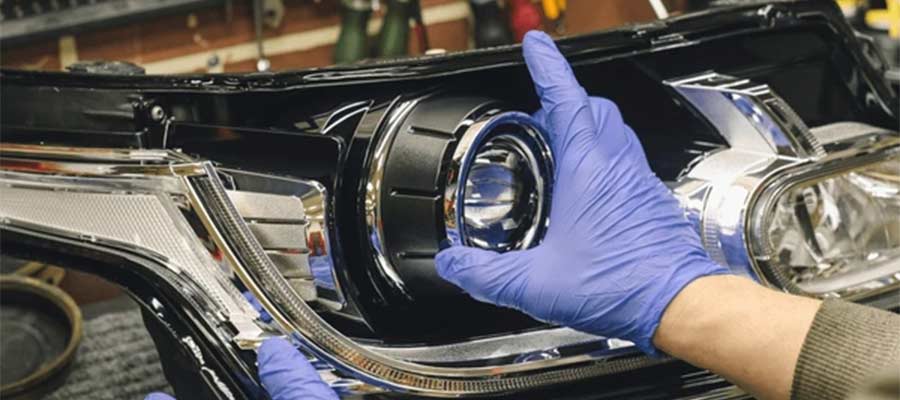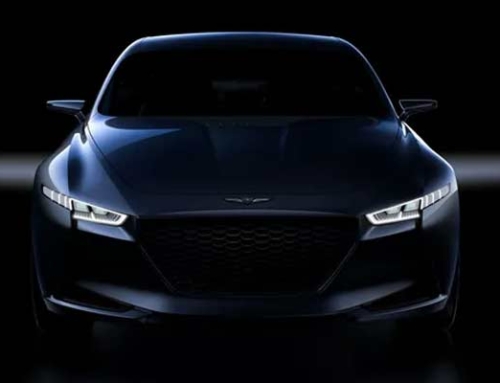
Discover whether LEDs can replace HID lighting systems. Explore the benefits, drawbacks, and factors influencing the transition, empowering informed decisions for efficient, cost-effective illumination solutions. In the lighting world, people are interested in the debate between high-intensity discharge (HID) and light-emitting diode (LED) lights. Everyone, from big industries to cities to regular folks, wants lights that save energy and money. So, the big question is: Can LED lights be a suitable replacement for HID lights? To figure this out, we need to look at each type of light, what they’re good at, and what they could be better at.
Understanding HID Lighting
High-Intensity Discharge (HID) Lamps: HID lamps include different kinds, such as metal halide, high-pressure sodium, and mercury vapor lamps. They work by creating an arc between two parts inside a tube filled with gas and metal salts. When the arc starts, it makes light. HID lamps are used in many different places, from lighting streets to lighting up sports stadiums.
Advantages of HID Lamps
- High Luminous Efficacy: HID lamps produce substantial luminous flux per watt consumed, making them efficient illumination sources.
- Longevity: HID lamps can offer relatively long operational lifespans when properly maintained.
- Suitability for Large Spaces: Due to their high output capabilities, HID lamps are traditionally favored for applications requiring broad area coverage.
Drawbacks of HID Lamps
- Warm-Up Time: HID lamps typically require a warm-up period before reaching full brightness, which may not be suitable for scenarios requiring instant illumination.
- Maintenance Intensive: HID lamps are prone to lumen depreciation over time, necessitating periodic replacement to maintain desired light levels.
- Limited Color Rendering Index (CRI): Some HID lamps exhibit lower CRI, impacting color rendition and visual clarity.
Exploring LED Lighting
Light-emitting diodes (LEDs): LEDs function by passing an electric current through a semiconductor material, stimulating the emission of photons and producing light. Over the years, LED technology advancements have led to widespread adoption across various sectors, from residential to industrial settings.
Advantages of LED Lighting:
- Energy Efficiency: LEDs are renowned for their exceptional energy efficiency, converting a higher percentage of input power into visible light than HID lamps.
- Instantaneous Illumination: LED lights reach full brightness instantly, eliminating the need for warm-up periods.
- Long Lifespan: LED luminaires boast extended operational lifespans, significantly reducing maintenance requirements and associated costs.
- Flexibility in Design: LEDs offer versatility in design, facilitating the creation of tailored lighting solutions for diverse applications.
- Enhanced CRI: Many LED products feature a higher Color Rendering Index (CRI), ensuring superior color rendition and visual acuity.
Drawbacks of LED Lighting
- Initial Cost: While LED technology has become more affordable over time, the initial investment for LED fixtures may be higher than HID equivalents.
- Heat Management: LEDs are heat-sensitive, necessitating efficient thermal management systems to maintain optimal performance and longevity.
- Quality Disparities: Variations in LED product quality and performance exist across manufacturers, necessitating thorough research and product selection.
Can LED Replace HID?
The question of whether LED can effectively replace HID lighting systems hinges on several factors:
1. Application Requirements
LED lighting may be a suitable replacement for HID in many applications, especially those that prioritize energy efficiency, instant illumination, and reduced maintenance.
2. Budget Considerations
Although LED fixtures might cost more to buy at first, the money you save over time on energy and maintenance usually makes them a better choice financially. So, even though you might spend more initially, LEDs can become a smart investment in the long term.
3. Environmental Impact
LED technology is great for sustainability goals because it uses less energy and lasts longer. This means it helps reduce how much carbon is put into the air and has less impact on the environment than HID lamps.
4. Regulatory Compliance
As people care more about saving energy and protecting the environment, rules and rewards from the government might encourage using LED lights instead of older HID systems.
5. Technological Advancements
As LED technology improves, it becomes more efficient, works even better, and gets cheaper. This makes LED lights an even better choice for all kinds of places.
Conclusion: Illuminating the Future with LED
In summary, while HID lights have been dependable for a long time, LED lights offer many advantages that make them a great alternative. LEDs are more energy-efficient, last longer, turn on instantly, and show colors better. They can replace HID lights in lots of places. As more people and businesses look for lights that are better for the environment and save money, switching to LEDs is a big move toward a brighter, more efficient future. By thinking about what each situation needs and being open to new technology, we can make the most of LED lights and light up the future ahead.
FAQs
- Can LED lights replace HID?
Yes, LED lights can effectively replace HID lighting systems, offering superior energy efficiency, longer lifespan, and enhanced performance in various applications.
- Are LED lights more expensive than HID?
While LED lights may have a higher initial cost, the long-term savings in energy consumption and maintenance expenses make them financially viable.
- Do LED lights require unique fixtures?
LED lights may require specific fixtures to accommodate their unique characteristics, ensuring optimal performance and longevity.
- Are there incentives for switching to LED lighting?
Many regions offer incentives, rebates, or tax credits for transitioning to energy-efficient LED lighting, encouraging adoption and promoting sustainability.
- What factors should I consider when switching to LED?
Factors to consider include application requirements, budget considerations, environmental impact, regulatory compliance, and technological advancements in LED technology.





